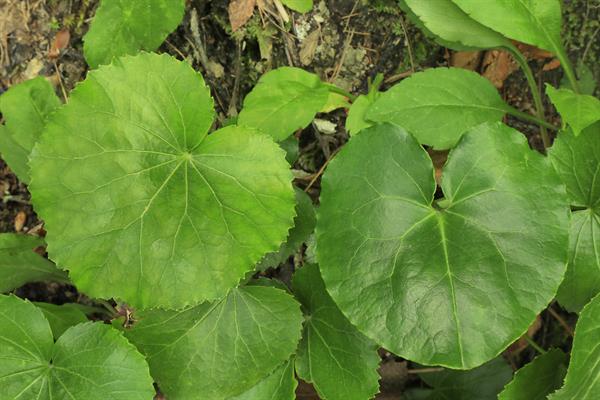
Origin/Endemic status: Endemic
Taxonomy Comments: Diploid and tetraploid races exist, and both are present in our area (Nesom 1983). In NC, diploids are the predominant race in the Mountains, the s. Piedmont, and the s. and c. Coastal Plain; tetraploids predominate along the Blue Ridge Escarpment, the n. Piedmont, and the n. Coastal Plain. In SC, diploids occur in the Coastal Plain and Piedmont, tetraploids in the mountains and escarpment. In GA, the pattern is similar, with diploids extending farther into the Piedmont and tetraploids restricted to the Mountains and upper Piedmont. In AL, only diploids are known. In VA, however, tetraploids occupy the Coastal Plain and e. Piedmont, diploids in the upper Piedmont and Mountains. A study of the flavonoids supported the idea that the tetraploid is an autopolyploid derivative of the diploid. Because of the close morphologic similarity, substantially sympatric distributions, and apparent general absence of demonstrable ecologic differentiation between the two races, it seems best not to attempt to taxonomically distinguish them (Nesom 1983; Soltis, Bohm, & Nesom 1983; Burton & Husband (1999).
Other Comments: "Galax-pulling" (the gathering of the often bronze-colored evergreen leaves for the florist trade) is an important folk industry in the mountains.
Synonymy: = FNA8, K1, K3, K4, NE, NY, Tn, Va, W, Scott & Day (1983); = Galax aphylla L. – C, F, G, RAB, S, WV, misapplied
Wetland Indicator Status:
- Atlantic and Gulf Coastal Plain: FACU
- Eastern Mountains and Piedmont: FACU
- Northcentral & Northeast: FACU
Heliophily: 4
Hover over a shape, letter, icon, or arrow on the map for definition or see the legend.
 © Gary P. Fleming | Original Image ⭷
© Gary P. Fleming | Original Image ⭷ © Alan M. Cressler | Original Image ⭷
© Alan M. Cressler | Original Image ⭷ © Alan M. Cressler | Original Image ⭷
© Alan M. Cressler | Original Image ⭷ © Edwin Bridges | Original Image ⭷
© Edwin Bridges | Original Image ⭷ © Keith Bradley | Original Image ⭷
© Keith Bradley | Original Image ⭷ © Gary P. Fleming | Original Image ⭷
© Gary P. Fleming | Original Image ⭷ © Edwin Bridges | Original Image ⭷
© Edwin Bridges | Original Image ⭷ © Richard & Teresa Ware CC-BY-NC, permission granted to NCBG | Original Image ⭷
© Richard & Teresa Ware CC-BY-NC, permission granted to NCBG | Original Image ⭷ © Alan Cressler: Hexastylis rosei (right) and Galax urceolata (left), North Carolina 1 by Alan Cressler source | Original Image ⭷
© Alan Cressler: Hexastylis rosei (right) and Galax urceolata (left), North Carolina 1 by Alan Cressler source | Original Image ⭷Feedback
See something wrong or missing on about Galax urceolata? Let us know here: (Please include your name and email if at all complicated so we can clarify if needed.)
Cite as...